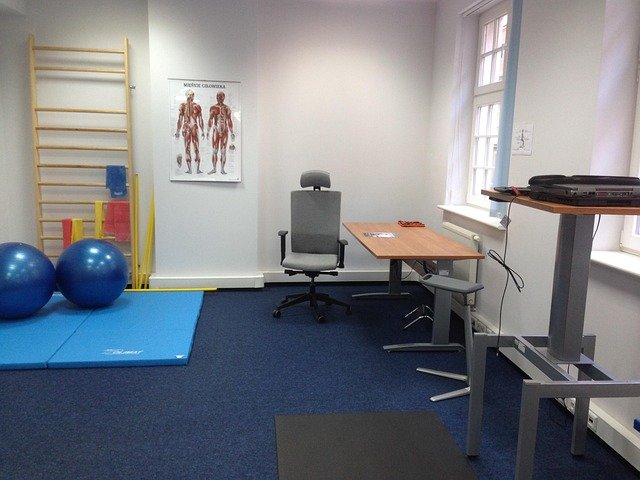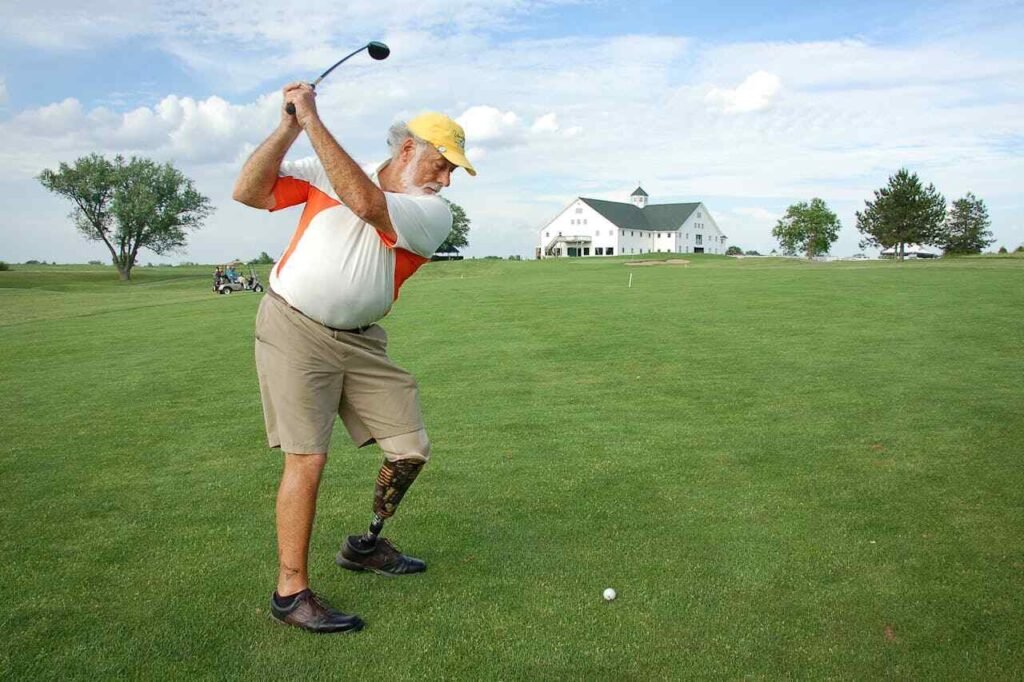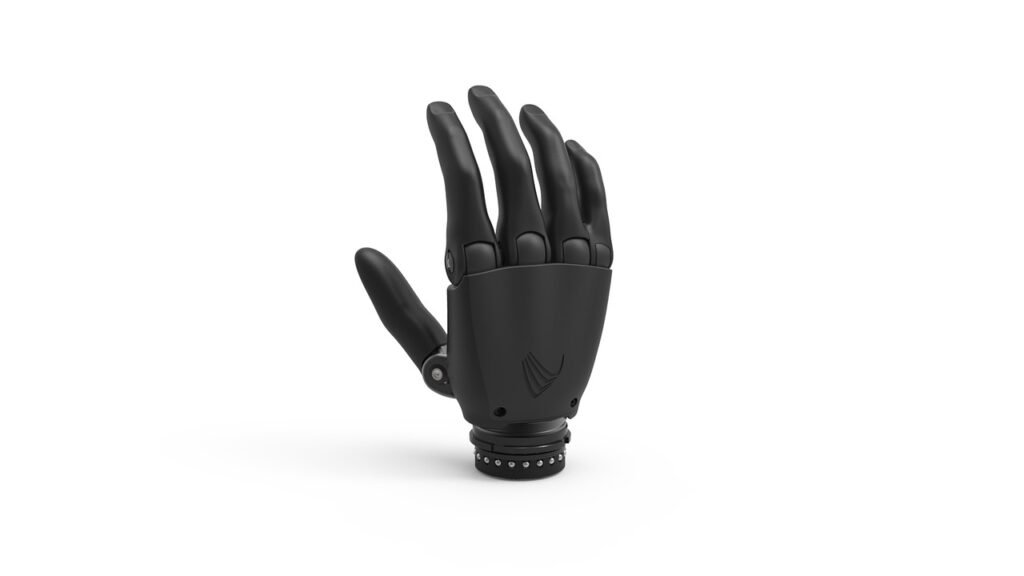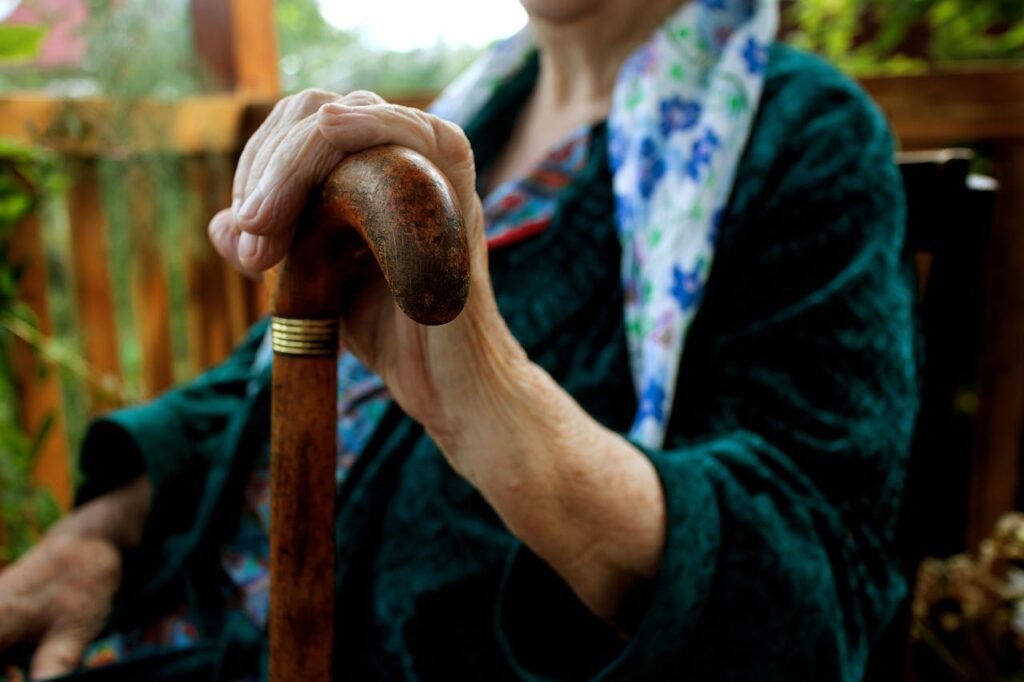Rehabilitation is one of the most important parts of recovery after getting a prosthetic limb. It’s the stage where strength, confidence, and independence return—slowly but surely. But for many seniors, traveling to rehab centers several times a week isn’t easy. Distance, time, and physical strain can make it difficult to stay consistent.
That’s where tele-rehabilitation—or tele-rehab—steps in. It’s a modern, simple way to get guided therapy sessions right at home using your phone, tablet, or computer. You can connect with your physiotherapist, prosthetist, or trainer online and continue your recovery safely from your living room.
At RoboBionics, we’ve seen how tele-rehab transforms recovery for seniors using prosthetic limbs. It allows them to stay active and engaged without the stress of travel. With just a small setup, they can exercise, learn adjustments, and get expert advice in real time.
This detailed guide will walk you through everything you need to know about tele-rehabilitation for prosthetic users—how to set it up, what to prepare before your first session, and how to make every session effective. It’s written especially for seniors and caregivers who want to make recovery easier, safer, and more comfortable.
Understanding Tele-Rehab and Why It Matters
What Is Tele-Rehabilitation

Tele-rehabilitation, or tele-rehab, simply means getting your rehab sessions online instead of visiting a clinic. You connect with your therapist through a video call, follow guided exercises, and receive real-time feedback—all from home.
It’s like having your physiotherapist right there in your living room, showing you every movement, correcting your posture, and encouraging you to keep going. All you need is an internet connection and a device with a camera.
For seniors with prosthetic limbs, tele-rehab is especially useful. It removes travel stress, saves energy, and keeps therapy consistent. You can stay on track with recovery even if you live far from a clinic or have mobility challenges.
Why Tele-Rehab Is a Game-Changer for Seniors
For older adults, regular in-person rehab can be exhausting. Long travel, waiting rooms, and crowded hospitals make it harder to stay motivated. Tele-rehab solves all that. It brings comfort, privacy, and flexibility.
Seniors can attend sessions from their favorite chair or a calm corner at home. The therapist adjusts the program to their environment and monitors progress online. With video calls and follow-ups, the connection remains strong and personal.
This approach keeps recovery steady without breaking the daily routine. It also helps caregivers stay involved, learning the right techniques to support exercises safely.
The Role of Tele-Rehab in Prosthetic Recovery
After receiving a prosthetic limb, the body needs time to adapt. Muscles relearn balance, joints adjust, and confidence builds gradually. Tele-rehab makes this process continuous by ensuring seniors never skip sessions.
Therapists can guide how to wear and remove the prosthesis correctly, check the socket fit, and teach safe walking or gripping techniques. Even minor adjustments—like arm angles or wrist movements—can be reviewed in real-time.
It’s not just about physical training. Tele-rehab also includes mental encouragement. It helps seniors regain trust in their new limb and reminds them that progress happens step by step.
Emotional Benefits of Tele-Rehab
Recovery is not just physical—it’s emotional too. Many seniors feel nervous or lonely after limb loss. Attending online rehab gives them regular human connection. Seeing and talking to their therapist boosts confidence and motivation.
Every session becomes a reminder that they’re not alone in their journey. They have someone cheering them on, even through a screen. This emotional support plays a huge part in healing faster and maintaining hope.
Safety and Convenience Combined
The best part of tele-rehab is safety. Seniors don’t have to risk travel, climb stairs, or wait in crowded clinics. Everything happens in a safe, familiar space.
If an exercise feels difficult, the therapist can immediately guide adjustments. And if the senior feels tired, the session can pause or shift to lighter activities. This flexibility ensures recovery stays comfortable and effective.
Preparing Your Home for Tele-Rehab
Choosing the Right Space for Sessions
The first step to successful tele-rehab is finding a calm, well-lit space at home. You don’t need anything fancy—just a comfortable area where you can move freely and focus without distractions.
Pick a room with enough open space to stretch your arms and legs. Avoid crowded corners or areas with loose rugs or furniture that could trip you. A flat, stable surface is important, especially for seniors using prosthetic legs.
Natural light is best, but if that’s not possible, use a bright lamp that lights your face and body clearly. This helps the therapist see your movements properly through the camera.
Try to keep noise to a minimum. Switch off the TV and avoid areas near the kitchen or street-facing windows during your session. A quiet setting helps you listen carefully and respond better to your therapist’s instructions.
Setting Up Your Device
Most tele-rehab sessions happen over video calls, so your device setup matters. You can use a smartphone, tablet, or laptop—anything with a camera and microphone. Make sure it’s placed at a stable height where the therapist can see your full body during exercises.
If you use a phone, prop it on a stand or stack of books so it doesn’t fall. Avoid holding it in your hand—you’ll need both hands free to move comfortably.
Before your session, test your camera and sound. Join the call a few minutes early to check that the therapist can see and hear you clearly. This small habit prevents delays and keeps the session flowing smoothly.
If your device runs on battery, plug it in or keep the charger nearby. You don’t want the call to end in the middle of an exercise.
Ensuring a Good Internet Connection
A stable internet connection keeps the session clear and interruption-free. If your Wi-Fi is weak, move closer to the router or switch to a mobile hotspot for stronger signal.
You can also ask family members not to stream videos or download large files during your rehab time—this gives your session better speed.
Most tele-rehab platforms work well on basic internet plans, so you don’t need high-end equipment. The key is a steady connection so your therapist’s voice and video don’t freeze mid-session.
Creating a Safe Environment
Safety should always come first. Clear the area where you’ll exercise—remove small stools, wires, or mats that could cause imbalance. If possible, place a sturdy chair nearby. It helps for support during balance training or if you feel tired midway.
If you’re using a prosthetic leg, make sure the floor isn’t slippery. You can add a thin yoga mat or rubber flooring for better grip. For upper-limb prosthetic users, a table or surface at elbow height is useful for hand exercises and stretching.
Keep a bottle of water, a towel, and any exercise tools your therapist recommends within reach. This prevents unnecessary movement during the session.
Lighting and Camera Angles
Your therapist needs to see how your body moves—so camera placement matters a lot. Position it so your full figure fits into the frame when you’re standing or sitting.
If you’re doing standing exercises, angle the camera slightly downward so your prosthetic limb and posture are both visible. For seated sessions, adjust it to chest level.
Avoid strong backlight from windows—it makes you appear as a shadow. Instead, face the light or have it shine from the side. Clear visibility helps your therapist give better feedback and ensure your form is correct.
Keeping Equipment Handy
Depending on your rehab plan, you might use simple equipment like resistance bands, lightweight dumbbells, or balance cushions. Store these items neatly in a small box or corner near your setup.
Before your session starts, check that everything is in place. You don’t want to waste time searching for tools once your therapist is online.
If you use prosthetic training aids or accessories, keep them clean and ready. For instance, extra liners, straps, or socket covers should always be nearby in case adjustments are needed.
Involving a Family Member or Caregiver
Having a family member or caregiver nearby can make your tele-rehab safer and more comfortable. They can help set up your device, adjust the camera angle, or assist you with certain movements if needed.
They don’t have to stay for the whole session—just being available for the first few minutes can be helpful. Over time, as you become more confident with your exercises, you may prefer doing sessions independently.
If your therapist gives homework exercises, the caregiver can also help remind you to practice daily and ensure the area stays safe and clutter-free.
Managing Background and Privacy
Privacy is important. Make sure your background is tidy and quiet. Close doors or curtains if you prefer a more private space.
Tell family members when your session is about to start, so they can avoid walking into the camera view or interrupting. A clear, uninterrupted session helps you and your therapist stay fully focused.
If you’re new to video calls, practice once or twice before your first session. Familiarity with the setup will make you feel more relaxed and confident.
Keeping Comfort in Mind
Rehabilitation takes effort, so your setup should make you feel at ease. The room temperature should be pleasant—not too hot or cold. Keep a chair or soft cushion handy for rest breaks.
Wear comfortable clothing that allows easy movement. Loose T-shirts and stretchable pants work well. If you’re using a prosthetic limb, make sure it fits snugly but not too tight before the session begins.
Remember, tele-rehab is not about speed—it’s about steady, safe progress. Feeling comfortable helps you stay consistent and enjoy the experience.
Your First Tele-Rehab Session: What to Expect and How to Prepare
Getting Ready Before the Call

The first session of tele-rehab is often a mix of curiosity and nervousness. It’s normal to feel unsure about what will happen. Think of it as a friendly chat with a professional who wants to help you move better and feel stronger.
Before the call begins, make sure your device, internet, and camera are working well. Open the app or video link your therapist shared and keep your surroundings calm. Place your water bottle and towel nearby, and wear clothes that allow easy movement.
If you use a prosthetic limb, check that it’s clean, dry, and fits comfortably. Adjust the socket if needed, and ensure all straps or sensors are in place.
It also helps to have a notebook handy. You can jot down any questions or notes your therapist gives during the session. These small details make your progress smoother in the coming weeks.
Meeting Your Therapist Online
Once the session starts, your therapist will introduce themselves and make you feel comfortable. They may ask about your daily routine, health history, and how long you’ve been using your prosthesis.
This conversation helps them understand your comfort level and the kind of exercises that suit you best. Be open and honest about what feels easy or difficult. The more clearly you share, the better your program will fit your needs.
Don’t worry about medical terms or remembering everything. Your therapist will guide the discussion in simple, clear language. Their goal is to make you feel confident, not pressured.
Assessment and Observation
Next, your therapist will likely observe how you move with your prosthetic. For lower-limb users, they might ask you to walk a few steps, turn, or stand from a chair. For upper-limb users, they’ll ask you to lift, reach, or hold small objects.
These gentle activities help them study your balance, coordination, and control. They’ll also check how your prosthesis fits and moves with your body.
You don’t have to do anything perfectly. This is just the starting point for your recovery plan. Every person’s body adapts differently, and your therapist will design a program that matches your strength and comfort.
Setting Goals Together
After the assessment, you and your therapist will set realistic goals for your rehab. These goals can include walking longer distances, improving hand grip, climbing stairs safely, or reducing stiffness.
The focus isn’t on speed—it’s on steady progress. Together, you’ll create a weekly schedule that includes exercises, rest days, and follow-up sessions.
Having clear goals gives direction and motivation. It reminds you why each session matters and helps you track your improvement week after week.
Understanding the Exercise Routine
Once the plan is ready, your therapist will demonstrate simple movements for your first exercises. These may include stretches, balance drills, or strength training for specific muscles that support your prosthetic use.
Each move will be explained carefully. Your therapist might ask you to repeat it slowly while they watch your posture through the screen. They’ll correct your form in real time if needed.
The session will also include rest breaks. These are important to prevent fatigue and allow your body to adjust. Seniors should never rush or push beyond comfort—rehab works best when done patiently.
Communicating During the Session
Good communication is key to a successful tele-rehab session. Speak up if something feels uncomfortable or painful. Your therapist cannot see how you feel, so it’s important to describe sensations clearly—tightness, pressure, or fatigue.
You can say things like, “I feel a pull in my thigh,” or “My arm feels a bit stiff when I lift it.” This feedback helps your therapist adjust exercises instantly.
They might also ask about your breathing and overall energy. Keep responses honest and simple. The aim is to make every session safe and effective.
Using Technology Comfortably
During tele-rehab, you may use simple digital tools to track your progress. Some therapists share exercise videos or use mobile apps where you can record sessions or mark daily practice.
If technology feels confusing at first, ask your therapist to guide you step by step. They’ll usually help you learn how to click links, adjust camera angles, or share feedback after sessions.
Over time, you’ll find these tools easy and even enjoyable. They help you stay consistent and connected, even when your therapist isn’t physically present.
Monitoring Your Prosthesis Fit
Your therapist will also teach you how to check your prosthetic fit daily. For leg users, this includes looking for skin redness, pressure marks, or discomfort near the socket. For hand users, it means checking grip strength, sensor response, and wrist movement.
During the session, they might ask you to remove and reattach your prosthesis to see how comfortably it fits. If any issue appears—like rubbing, pain, or loose alignment—they’ll guide you on what to adjust or when to consult your prosthetist.
This habit helps prevent small issues from turning into bigger problems. A well-fitted prosthesis is the foundation of smooth rehab progress.
Ending the First Session
As your first session ends, your therapist will recap what you practiced. They’ll share simple exercises to do daily and suggest how long to do them. These are often gentle stretches or small strengthening moves to build consistency.
They may also schedule your next session or ask you to send updates after a few days. Take note of all instructions and confirm the next meeting time before logging off.
Afterward, rest for a while. Tele-rehab may seem light, but it still engages your body and mind. Drink some water, relax, and reflect on how you felt during the exercises.
Building Confidence for Future Sessions
Your first tele-rehab session sets the tone for your entire journey. The more comfortable you become with the process, the more natural it feels.
Over the next few weeks, your therapist will increase the intensity gradually, introduce new exercises, and celebrate small wins with you. Every session will bring improvement in strength, movement, and confidence.
The best part is that you’ll be doing it all from the comfort of your home—your own space, your own pace.
Making the Most of Your Tele-Rehab Sessions: Tips for Progress and Motivation
Building a Routine That Fits Your Life

Tele-rehab works best when it becomes part of your daily rhythm. Set a fixed time for your sessions, preferably when you feel fresh and alert—morning hours work well for most seniors. Consistency helps your body adapt faster, and your therapist can track progress more clearly.
Even on non-session days, spend a few minutes doing light stretches or simple balance exercises. Regular movement keeps your joints flexible and your muscles active. The idea is not to overwork yourself but to keep your body familiar with motion.
Create a small ritual before each session—maybe play soft music, adjust the lights, or take a few deep breaths. This signals your body that it’s time to focus. A calm mind makes learning easier and movements smoother.
Keeping Track of Your Progress
Progress in rehab isn’t always dramatic—it’s built in small, steady steps. You might notice that you stand longer, climb stairs with more balance, or hold objects more firmly. These are victories worth celebrating.
Keep a simple diary or notebook where you record each session. Note what exercises you did, how long they lasted, and how your body felt afterward. Over time, these notes reveal your growth clearly.
Your therapist may also track improvement through short assessments. They might ask you to repeat certain movements or compare your speed and stability from earlier weeks. Seeing progress written down gives motivation to keep going.
Handling Tired Days Gracefully
Some days, your body might feel heavy or sore, and that’s perfectly okay. Rehabilitation isn’t about pushing through pain—it’s about understanding your limits and resting when needed.
If you wake up feeling low on energy, inform your therapist. They can adjust the day’s exercises or guide you through gentle stretches instead. Rest is a part of recovery; it allows your muscles and mind to recharge.
Listen to your body. If something hurts, stop. If you’re tired, breathe and take a break. Healing is a marathon, not a sprint.
Staying Connected with Your Therapist
Communication is the foundation of good tele-rehab. Stay open about your experiences—share what feels good, what feels hard, and what feels confusing. Your therapist’s job is to tailor the program to your comfort and pace.
If you miss a session, let them know why. Life happens—maybe there’s a family visit or a medical appointment. Therapists appreciate honesty, and they’ll help reschedule your sessions easily.
You can also send them short updates between appointments—a message or photo showing your practice. This keeps your connection strong and helps them monitor your progress closely.
Managing Motivation and Mindset
Motivation can dip from time to time. You might wonder, “Am I improving?” or “Is this effort really worth it?” These thoughts are natural. The key is to remind yourself why you started.
Each movement, each stretch, is rebuilding your strength. Each session brings you closer to walking freely, cooking comfortably, or doing what you love again.
Set small goals that excite you—like lifting a teacup steadily, walking across the room without help, or buttoning your shirt on your own. These everyday milestones make your progress real.
You can also ask your therapist to include fun challenges, like balancing while holding an object or doing short tasks that mimic daily life. Turning therapy into play makes it enjoyable and rewarding.
Practicing Safety During Exercises
Safety is everything. Always start exercises slowly, with clear focus. If your therapist shows a new move, watch closely first, then try it at your own pace.
Keep a sturdy chair or support nearby in case you lose balance. For leg prosthetic users, make sure your foot alignment feels stable before standing. For arm prosthetic users, confirm that all sensors or straps are secure before lifting objects.
If you ever feel dizzy, stop immediately and sit down. Don’t continue until you feel steady again. Rehabilitation should never cause strain or panic—it should build trust in your body.
Balancing Therapy with Rest and Routine
Your body heals best when it’s supported by good habits—balanced diet, enough sleep, and relaxation. After a tele-rehab session, take ten to fifteen minutes to rest. It helps your muscles absorb the benefits of exercise.
Try to keep your daily routine steady. Have meals on time, go for short walks if possible, and stay hydrated. A stable lifestyle strengthens both your physical and mental recovery.
Sleep plays a huge role in healing. When you rest well, your body repairs tissues and your mind stays positive. So, keep your evenings calm—avoid heavy meals or late-night screens before bed.
Using Home Tools to Improve Practice
You don’t need fancy gym equipment for rehab. Everyday household items can serve well—a wall for balance, a towel for stretching, or a soft ball for grip training. Your therapist will guide you on what to use safely.
For example, a stable kitchen counter works perfectly for arm exercises, while a dining chair supports balance drills. Seniors often feel more relaxed using familiar items—they make therapy feel less like medical work and more like part of life.
If your therapist recommends specialized aids like resistance bands or foam pads, buy them from trusted sources. Store them in one spot so you’re always ready for practice.
Staying Emotionally Balanced
Recovery can be emotional. Some days, frustration may appear—especially when progress feels slow. When that happens, take a moment to breathe deeply and remind yourself how far you’ve come.
Talk to your therapist about how you feel. They’re not just there to guide your body but also to encourage your spirit. Emotional well-being is equally vital in rehabilitation.
Celebrate small wins with your family. Let them see your progress—it reminds you that your hard work is paying off and strengthens your motivation.
If you ever feel stuck, remember that healing isn’t a straight line. Some days move fast, others move slow, but every day moves forward.
Involving Family in Your Journey
Family support can make tele-rehab smoother and more joyful. Ask your loved ones to watch your exercises once in a while. When they see your progress, they’ll cheer you on even more.
If they’re willing, they can join simple sessions—helping you stretch, adjusting the camera, or noting the therapist’s instructions. Shared participation builds understanding and strengthens family bonds.
It also gives you confidence. You’ll know that even when the therapist logs off, someone at home understands how to assist safely.
Celebrating Your Growth
Every milestone deserves celebration. Whether it’s your tenth session, your first step without support, or simply a day when you feel stronger—acknowledge it. Smile, share the news, or treat yourself to something nice.
Positive reinforcement builds enthusiasm. It reminds your mind that effort leads to joy. Over time, rehab stops feeling like a task—it becomes part of a happier, healthier lifestyle.
When to Ask for Adjustments
If you ever feel your exercises are too easy or too difficult, speak up. Your therapist can fine-tune the program. Progress depends on finding that perfect balance—not too light that it feels useless, and not too hard that it causes pain.
As your strength improves, your therapist might increase repetitions, introduce new tools, or extend your session slightly. These gradual changes keep you improving without overwhelming your body.
Consistency, communication, and patience together create lasting results.
Sustaining Long-Term Progress and Conclusion
Turning Tele-Rehab into a Lifelong Habit

The greatest success in tele-rehab comes when it becomes part of daily life, not just a short-term recovery plan. Once you’ve built comfort with your exercises and your prosthesis, continuing those habits ensures lasting strength and flexibility.
Make a small routine that you can follow even after your scheduled sessions end. Start with simple stretches in the morning, light balance work in the afternoon, and short relaxation exercises before bed. Regular movement keeps the body active and the prosthesis comfortable to use.
The key is consistency. You don’t have to train for hours—just twenty minutes of focused, safe activity can make a big difference. It keeps your muscles alert and your confidence high.
Staying Connected with Your Therapist Over Time
Even after you finish your initial tele-rehab program, keep occasional check-ins with your therapist. These follow-up sessions help you fine-tune techniques, track progress, and catch any small issues early.
Sometimes, as your body changes, your prosthesis fit may need minor adjustments. Your therapist or prosthetist can guide you through these updates online. Regular check-ins make sure you continue to move safely and comfortably.
Think of your therapist as your long-term partner in independence. They’re there to support your journey—not just for recovery, but for ongoing wellness.
Maintaining a Healthy Lifestyle
Tele-rehab works best when paired with healthy living. Balanced nutrition, hydration, and rest strengthen your body for long-term success. Seniors should focus on foods that support joint health and muscle strength—fresh fruits, vegetables, and proteins are excellent choices.
Keep yourself hydrated throughout the day. Water helps muscles function better and prevents fatigue during exercises.
Sleep is equally important. A good night’s rest allows your body to rebuild strength and helps your mind stay positive. A calm routine before bedtime—such as light reading or soft music—can improve sleep quality.
Using Technology as an Everyday Ally
Your tele-rehab experience will also make you more comfortable with technology. Continue using video calls, exercise apps, or reminders to stay active. You can even record short clips of your exercises to monitor progress or share with your therapist later.
If you have a prosthetic with smart features—like a myoelectric hand or adjustable limb—learn how to use its companion app or control settings. Technology today is designed to make life simpler, not complicated. A few minutes of learning can give you great independence.
Managing Challenges Gracefully
Some days, your prosthesis might feel heavier or your body more tired. Don’t be discouraged. These moments are part of every rehabilitation journey. Take a step back, rest, and return when you feel ready.
If pain or discomfort persists, contact your therapist or prosthetist immediately. They can guide you on adjustments or suggest rest until things settle. It’s always better to pause than to push through strain.
Trust your body—it knows when to slow down and when to move forward. Patience and care are your best tools for long-term success.
Finding Joy in Everyday Movement
The goal of tele-rehab isn’t just physical recovery—it’s reclaiming the freedom to enjoy life again. Whether it’s watering your plants, cooking, or walking to the park, every movement becomes meaningful when done comfortably and confidently.
Your prosthesis is not just a device—it’s part of your body’s new rhythm. As you grow stronger, you’ll notice that it starts to feel natural, almost effortless. This sense of harmony is what tele-rehab helps you build over time.
Movement brings joy. It keeps the heart young and the mind calm. So celebrate every small action—each one is a symbol of strength and persistence.
Staying Motivated Beyond the Program
When your formal sessions end, motivation can dip a little. To keep the spirit alive, set new goals for yourself—walk a little longer, lift a little higher, or master a task that once felt impossible.
You can also join online support groups or communities for prosthetic users. Sharing experiences with others going through the same journey helps you stay inspired and connected.
Encouragement is powerful, especially when it comes from those who understand your challenges. Together, you learn, grow, and stay motivated.
The Role of Family in Long-Term Success
Family continues to play an important role even after tele-rehab sessions are over. Encourage your loved ones to stay involved in small ways—helping you set up for exercise, reminding you about follow-ups, or simply watching your progress.
Their support gives strength on difficult days and adds joy to milestones. When they see your independence grow, they’ll share your pride in every achievement.
Healing, after all, is not just physical—it’s emotional and shared.
Conclusion: Healing from Home, Living with Freedom
Tele-rehabilitation has opened a new path for seniors using prosthetics. It brings care, guidance, and encouragement right into your home—making recovery easier, safer, and more personal.
At RoboBionics, we’ve seen how powerful this approach can be. Seniors who once hesitated to move freely now walk, reach, and smile with renewed confidence. Technology has made healing more human—connecting people, not just machines.
With thoughtful setup, steady communication, and daily practice, tele-rehab can become a lifelong partner in your wellness journey. It helps you stay in charge of your body, your prosthesis, and your independence.
And if you or your loved one are beginning your rehabilitation journey, we’re here to guide you. At RoboBionics, our team designs world-class, made-in-India prosthetic limbs like the Grippy™ Bionic Hand—built for comfort, control, and confidence.
We also support users through every step of recovery, from fitting to training and tele-rehab guidance.
You can book a free demo or consultation at www.robobionics.in/bookdemo and start your journey toward independence today.



